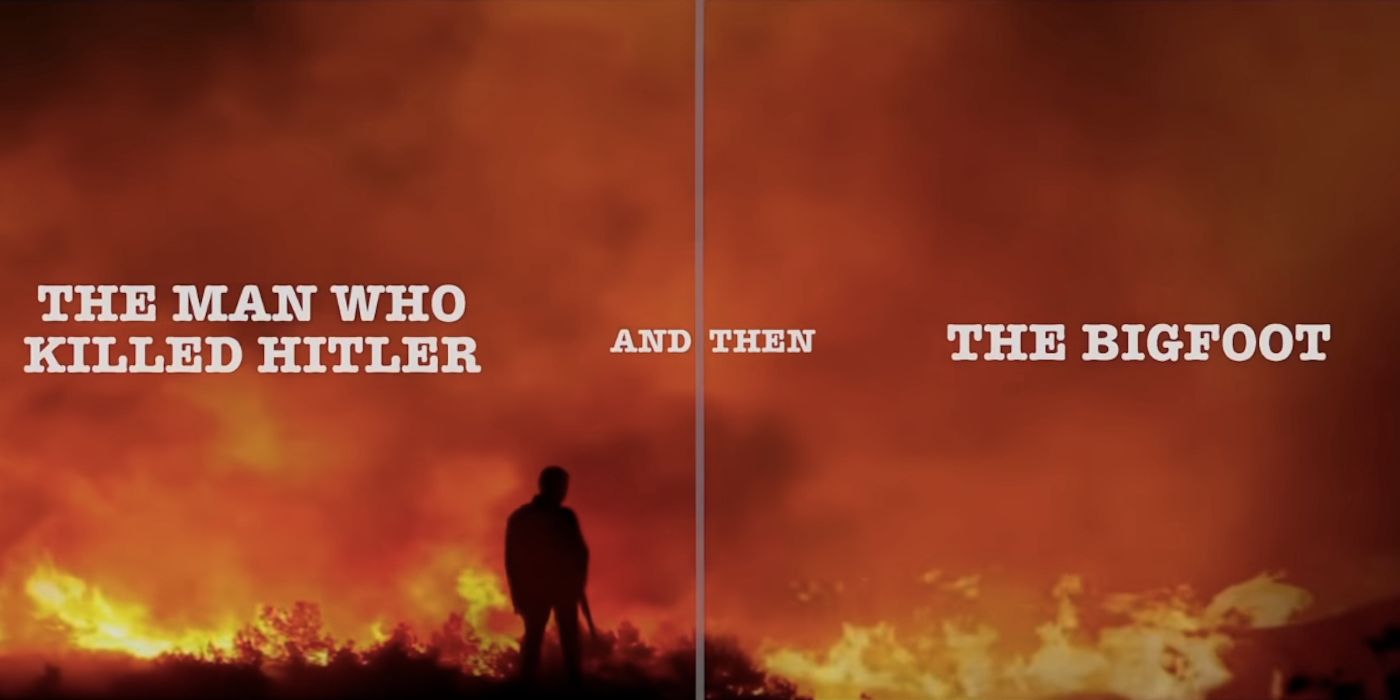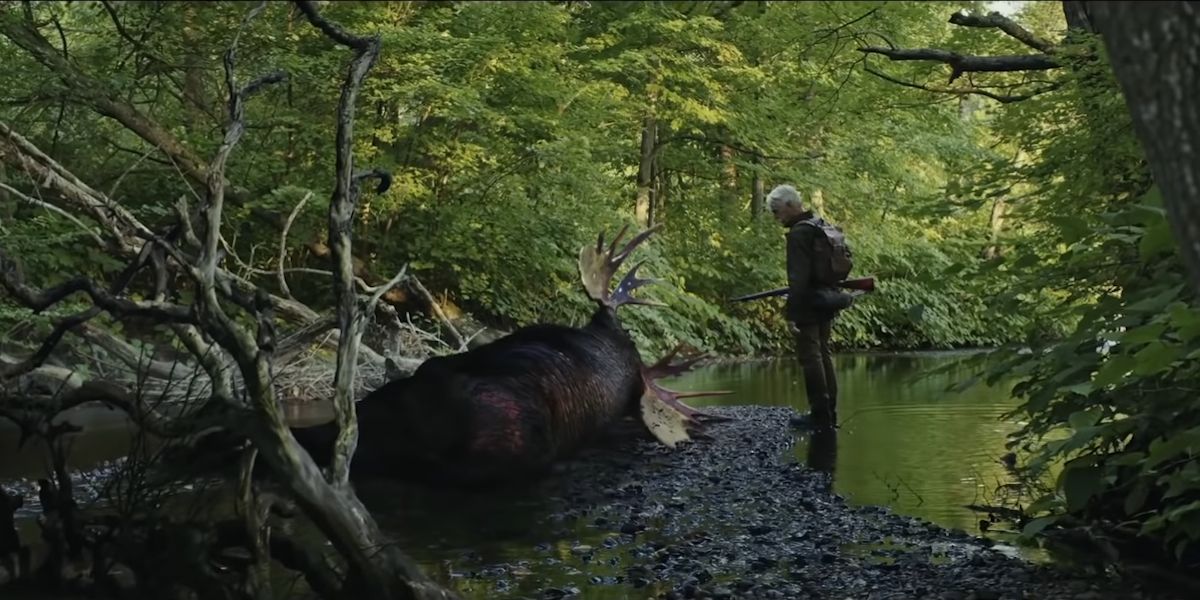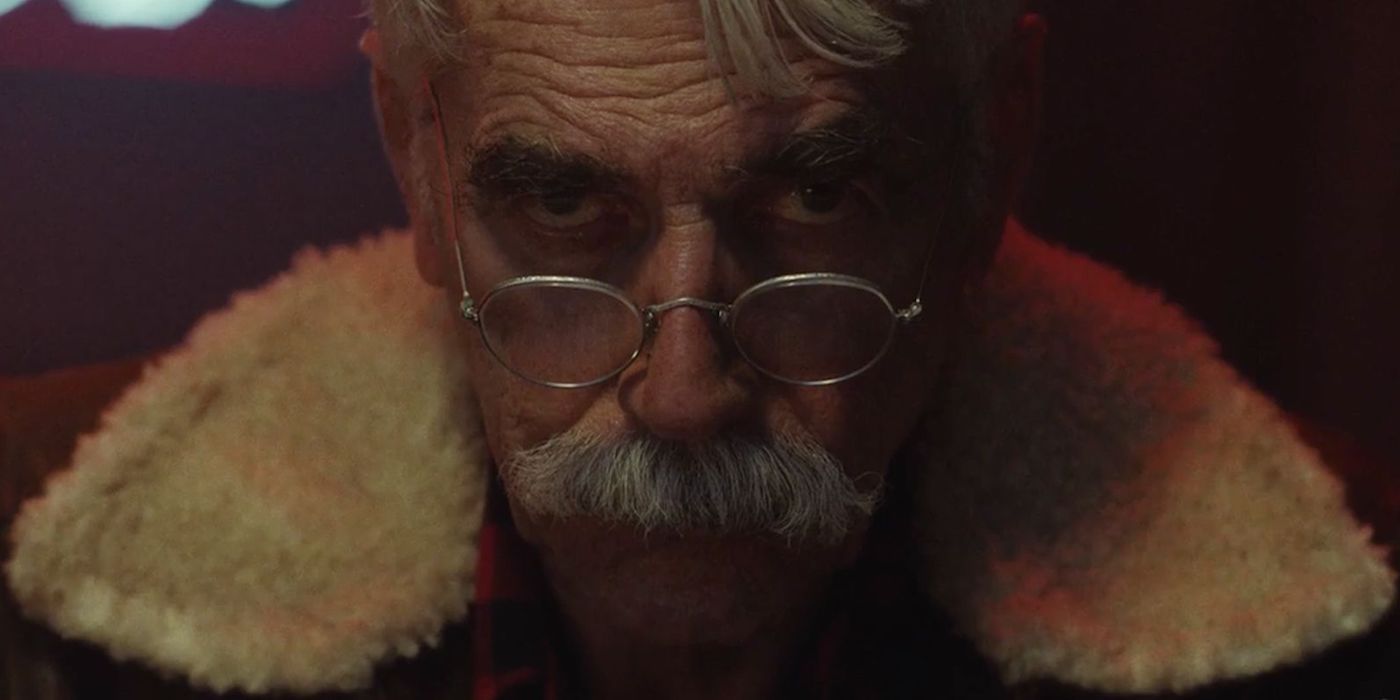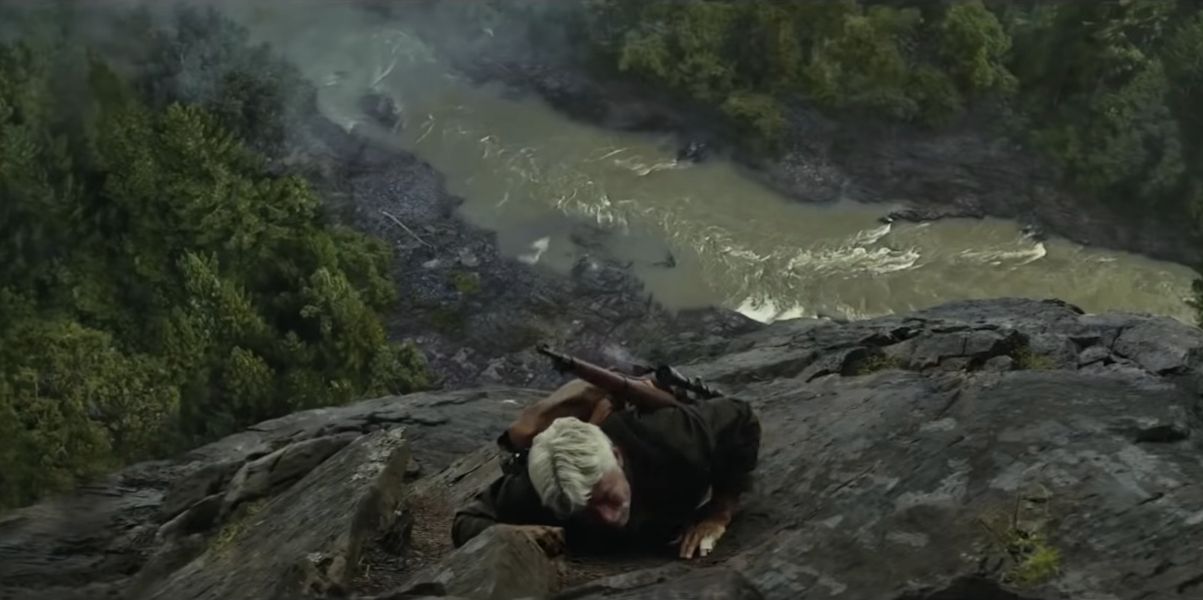After making a splash at the 2018 Fantasia Film Festival, The Man Who Killed Hitler and Then The Bigfoot is approaching its proper release to general audiences. Though it sports the title of a pulpy straight-to-video action flick, that assessment couldn't be further from the truth.
Boasting the talents of Oscar-nominated special effects legends Douglas Trumbull and Richard Yuricich, to say nothing of the unparalleled star power of the great Sam Elliot, The Man Who Killed Hitler and Then The Bigfoot is a character study disguised as a pulpy romp, delivering excitement and palpable drama in equal measure.
While promoting the movie, director Robert D. Krzykowski spoke to Screen Rant about The Man Who Killed Hitler and Then The Bigfoot, his feature film debut. He told us about how his script evolved from a tongue-in-cheek adventure to its current, far more dramatic, form, as well as the extensive pre-production process which led to this low-budget film possessing the scope and gravitas of a mega-budget blockbuster. Of course, he also shared his thoughts on his iconic lead actor, Sam Elliot, who was recently nominated for his first Academy Award, for his work in A Star Is Born.
Can you tell us about the origins of this movie's core idea, of an old soldier, a mythical man, being brought back to fight a mythical creature?
Some things that happened in my life around the time that I began writing this, and this was well over twelve years ago, they made me start thinking about fear, loss, and regret. I was young at the time, and those things were really clawing at me. I had just begun writing the script, which was much more of a pulp adventure, so I thought, maybe I can do both; maybe I can use the pulp elements as something of a parable. That was the origin. I pulled the two timelines apart and made it about an old man looking back in a searching way, trying to find a connection with something. We're not sure if he's ever gonna find it until the culmination of the movie, which I hope reveals a whole other dimension to an American hero like this, in that they're often fraught with pain and fear. What happens to you when you exchange your life in the service of others?
That's a beautiful way of putting it. One thing I really like is how it takes this seemingly outlandish premise and plays it completely straight. There's a couple of jokes here and there, but the focus is always on that character, of Calvin Barr, and his life's journey. You mentioned having it as a parable, but what was your approach to this pulpy subject matter that other filmmakers might try to bring more in that direction?
I thought of this as a character study, which means you stay with the character. Though we're jumping between two timelines, even then, both of those characters have to feel spiritually connected in some way. When you're making a characters study, you spend as much time as you can with that character. You don't just highlight the big moments in their life; you have to spend time on the little things, too. Those little moments underscore everything about that person. The scene with the lottery ticket reveals so much about the type of person Calvin is: how he interacts with a younger person, his code of morality, the notion that he feels bad for the person who lost this one hundred dollars. He knows the value of a hundred dollars to somebody who might need it. There's a lot being said in every scene that might seem small or even something like a non sequitur, but they're not. They're there to inform this much bigger picture of who this person is and why he feels the way he feels.
This movie made its debut at the Fantasia Film Festival last year. I know that a lot of movies get tweaked or retooled or edited between then and their proper release. Was that the case here?
No, we didn't touch it. The only thing we got, which was amazing, was, we had done two weeks at Skywalker Sound before it went to Fantasia, and then we got an extra day afterwards. So we were able to finish some ideas that we were rushing to get into the movie at the last minute. It just added another slight layer of elegance to some moments that were nagging at me. If anything, we were able to very slightly improve the movie, but it would be very hard to notice for anybody who had seen the previous version.
The marquee star of the film is Sam Elliot. He's never been out of style, but he's definitely super-hot right now!
I don't think he expected or anticipated that. He's talked to me about that. He's never been more famous than he is right now. He said he used to be able to go into restaurants, and if he shaved his mustache, nobody would know who he was. He said now, he's on a whole different level. It's because he's had a fifty-year career of making people happy and they want to celebrate him right now. He deserves it supremely.
How thrilled were you when he agreed to do the movie? What was that casting process like?
It told me that this could work. I needed a lead who didn't come with any baggage that would make people think that the movie might be silly or campy or exploitative. I think people trust Sam has good taste and good judgment. He told me he's never taken a job for money in the fifty years that he's taken jobs; he just does scripts that he reacts to. This was a low-budget film, so I was thrilled. I couldn't believe that he said yes. At that point, I had another terrifying realization, that this movie had taken over twelve years to make, and suddenly, it was about to become a reality, and that meant getting really serious about all the moving parts that make a movie like this happen in twenty-five days.
Wow, that was your schedule?
The movie was shot in twenty-five days.
That's amazing. It's such a gorgeous movie.
Well, there were a lot of storyboards, a lot of conceptual designs, and I had the benefit of working with Douglas Trumbull and Richard Yuricich for over six months in advance to plan shots and visual effects. I had known that Alex Vendler was going to shoot the movie years in advance, so he had seen all the locations several summers before. We all had a lot of time to talk about what everything would be. The strange thing was that by the time we got to set, we had all rehearsed it so much that it was just us executing our rehearsal. The pressure was released after about three days into the shoot; we realized the entire team was bringing their gifts and this was going to work because everybody was invested in making this thing that we all set out to make. That doesn't mean it was easy. It definitely wasn't easy! But there was a lot of planning, a lot of communication, and a lot of trust between the departments.
Another thing that really stands out in The Man Who Killed Hitler and Then The Bigfoot is the score by Joe Kraemer. It's so beautiful and majestic, grandiose.
Getting Joe was a dream come true. I used to listen to his music in high school. I remember first hearing the score for The Way of the Gun, thinking that it felt stripped down and had a throwback feel, but a strange romantic quality to it. I kind of tracked his career, and as he progressed, his scores got more grand and more complex, but his heart was always there. When I did my short film, Elsie Hooper, I sent it to his reps on a whim, and they showed it to him, and Joe said, "I'll score this for you!" He did it for next to nothing, and we stayed in touch. He wanted to know what I was doing next, so I sent him the script. He read about twenty or thirty pages of it. He said he doesn't usually read the scripts, because he likes to be kind of the last editorial eye on the cut of the movie so that he can actually talk about it as a storyteller. Joe is a storyteller. He delivered this score that's just up there with David Shire, Jerry Goldsmith, John Williams, and Bernard Herrmann; we talked a lot about those people, and the score he delivered for this little film... I remember hearing a quote from Robert Zemeckis, that he had asked Alan Silvestri: "I didn't quite get the scope of the movie that I had in my head; can you make the movie as big as I imagined it being?" I think that's exactly what Joe's music does for this film.
More: The Man Who Killed Hitler and Then The Bigfoot Trailer
The Man Who Killed Hitler and Then The Bigfoot releases on VOD and in theaters on February 8.




